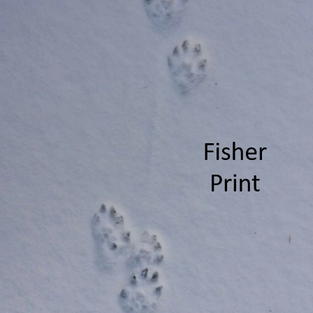Amateur Animal Tracking Around Keoka Lake
- Brenda Hambleton

- Mar 8, 2021
- 3 min read
by Claire Pendergast
This is our first time spending an entire year on the lake and with that there has been so much beauty, eye opening experiences and lessons learned. One of our favorite things we have been learning about and exploring are finding, following and identifying animal tracks in the snow around Keoka Lake and who has left them behind.
There are many wonderful tools to help you identify tracks and learn more about tracking. The main tools we have been using are our cameras on our phones, a general internet search, the iTrack Pro app (or any other animal tracking app), “Pocket Guide to Animals/Tracks” by Ron Cordes and Andy Diamond, a wildlife trail camera and some free online classes through University of New Hampshire’s Cooperative Extension Forestry and Wildlife Program’s Facebook page. If you are interested in learning more about tracking animal prints around the lake there is a great free online class through their Facebook page you could check out called “NH Woods & Wildlife: Live! – Whose Prints Are These? Tracking Wildlife in Winter”, January 28, 2021.
If you want to try some tracking around the lake you might first find a set of tracks and take some photos of them, pull out either your pocket guide or use any tracking app to identify the track. We have found that tracks in shallow snow or slush are the easiest to identify. They leave a nice clear imprint. Some of the best places we have found tracks like this are a few days after a light snow where there is not a lot of other snow on the ground or there is a nice frozen crust of snow underneath leaving a thin layer of fresh powdery snow on top. We have found many tracks around winter streams and creeks, around the edge of the lake and through clear cut paths throughout the woods. Animals frequent creeks, streams and lake’s edges often to drink and find prey. Both the predator and the prey come to these areas to obtain fresh water. The water’s edge creates a perfect condition to leave an easily identifiable print. You may be able to find clear prints in these areas in the spring, summer and fall in the mud or damp sand and soil around the water’s edge.
When we are identifying the tracks, we look at the shape, size and the gait of the animal’s imprint to help identify the animal. If we are taking photos to help with identification, we will take one of our gloves off and photograph the imprint with the glove to give us a sense of scale. We will also place the glove between the prints to give us a sense of the size of their gait and stride. This will help us identify the type of animal in addition to the size of the animal.
Besides the print, the gait and stride of an animal is a huge indicator of the animal you are tracking.
When we find a track, we will follow that track for a period of time to see if we can find any other evidence of the animal to help identify it, like scat or debris from a meal. There are great tools online or apps to help identify animals by their scat, too. Additionally, there are many clues to the identity of an animal from the debris they leave behind after a meal. Pinecone shells left behind by squirrels or bits of squirrel left behind by bobcats!
Another tool that we have been using this past year is field cameras. This has brought us enormous pleasure and we have captured some wonderful video of deer, coyote, fisher and fox around the lake. These cameras can be purchased for $34.99 and up online or via sporting goods and outdoor stores. Please see some photos of prints and still photos taken from videos of some of the animals we have captured on cameras within the last two months.
This has been a wonderful way to enjoy the beautiful surroundings of the lake and the animals that also call Keoka Lake their home.
















Comments